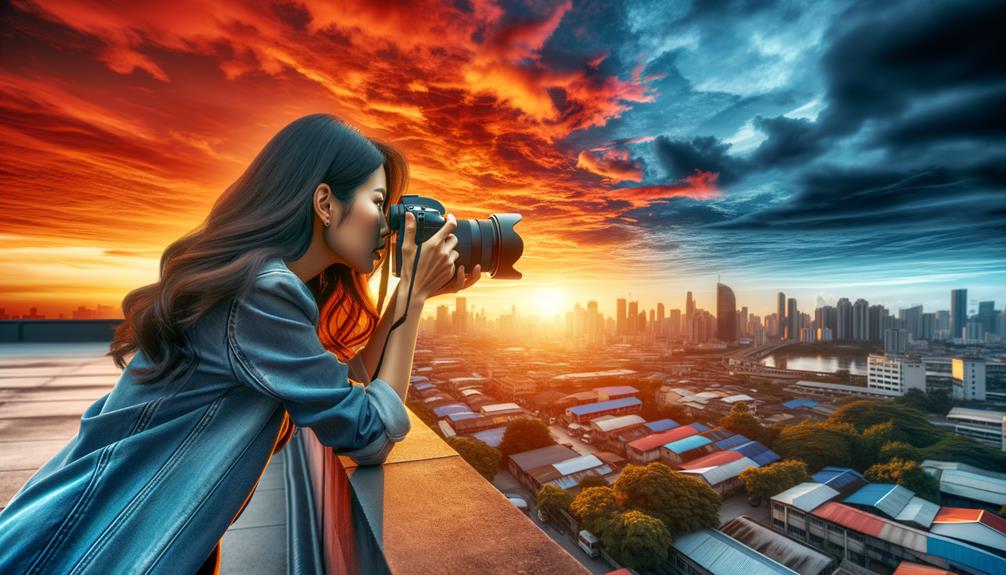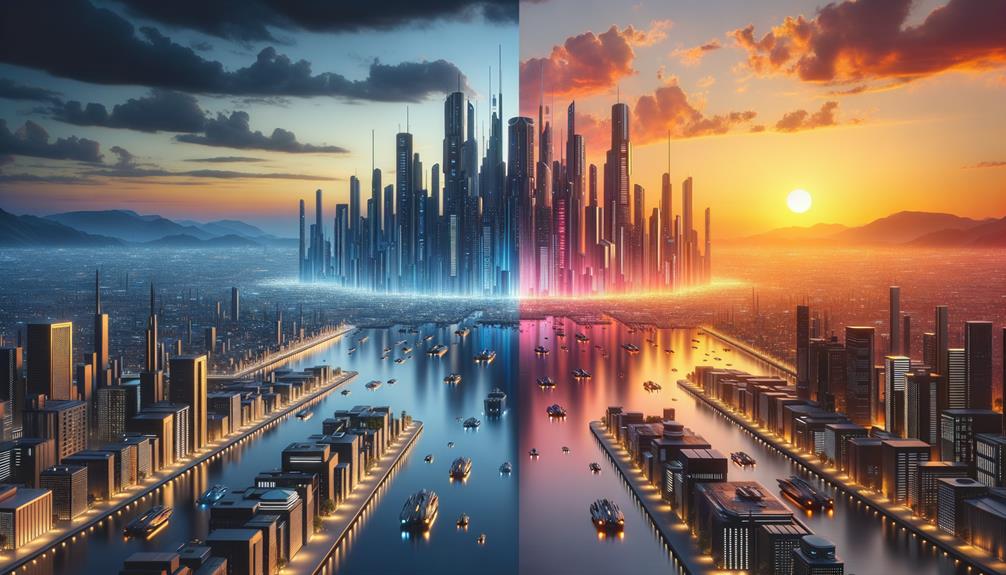
High Dynamic Range (HDR) technology enhances your visual content by increasing the dynamic range, meaning it offers richer contrasts and more vivid colours.
It captures and reproduces a wider spectrum of light, reflecting real-world conditions more accurately than standard imaging.
You’ll see deeper blacks, brighter whites, and a more vivid colour palette. Whether you’re watching movies or playing video games, HDR transforms the experience with lifelike quality on compatible HDR displays.
Each HDR format, like HDR10 and Dolby Vision, employs different methods to optimise image quality. As advancements continue, the potential for even more immersive visuals increases.
Discover how these technologies bring each scene to life with unparalleled clarity and depth.
Quick Summary
- HDR, or High Dynamic Range, enhances image quality by expanding the range of colour and contrast.
- It captures and reproduces a broader spectrum of light intensities, reflecting real-world conditions.
- HDR technology is used in various formats such as HDR10, Dolby Vision, and HLG, each offering unique enhancements.
- The technology is crucial in sectors like retail, agriculture, and public safety for improved visual accuracy.
- HDR improves media by maintaining detail in varied lighting, enhancing colours, and providing a more immersive experience.
Understanding HDR Technology
Exploring HDR technology reveals how it significantly enhances image quality by expanding the dynamic range to deliver richer contrasts and more vivid colours.
When you investigate HDR processing, you’re engaging with a method that meticulously captures and reproduces a broader spectrum of light intensities.
This results in visuals that more accurately reflect real-world light conditions.
HDR displays play a vital role in this enhanced viewing experience.
These aren’t ordinary screens; they’re engineered to showcase more shades of grey and a wider gamut of colours, making the images burst with life.
As you watch content on HDR-compatible TVs, you’ll notice an unprecedented level of detail in both the brightest highlights and the darkest shadows, rendering a truly immersive visual experience.
Types of HDR Formats
Several HDR formats exist, each tailored to optimise your viewing experience with specific technical enhancements.
- HDR10: This base format uses static metadata, setting a consistent brightness level that doesn’t change from scene to scene.
- Dolby Vision: It steps up by using dynamic metadata, allowing brightness and colour adjustments on a frame-by-frame basis for precision-focused enhancements.
- HLG (Hybrid Log-Gamma): Ideal for live broadcasts, HLG is compatible with SDR, ensuring no viewer misses out regardless of their display capabilities.
- HDR10+: This format enhances the HDR10 standard by incorporating dynamic metadata, which adjusts the light and colour range dynamically, enhancing each scene to deliver a more immersive viewing experience.
Applications of HDR Imaging

Beyond entertainment, HDR imaging greatly enhances various sectors such as retail, agriculture, and public safety.
In retail, you’ll find HDR technology transforming customer experiences with vibrant retail displays that showcase products in unprecedented detail and colour accuracy.
This precision in presentation not only attracts attention but also aids in making more informed purchasing decisions.
Meanwhile, in agriculture, HDR is vital for agricultural robots operating under diverse lighting conditions.
These robots, equipped with HDR cameras, capture highly detailed images that are essential for tasks like crop monitoring and health assessment.
This functionality guarantees they perform accurately regardless of the intensity or angle of sunlight, thereby optimising farm operations and contributing to smarter, more sustainable agriculture practices.
Benefits of HDR in Visual Media
HDR technology greatly enhances the visual quality of media by improving contrast and colour accuracy, offering you a more realistic and immersive viewing experience.
The benefits of HDR in visual media are significant:
- Improved Contrast Levels: HDR delivers enhanced contrast, making darks deeper and whites brighter without losing detail in either.
- Enhanced Colour Accuracy: You’ll notice a more vivid spectrum of colours, each rendered with greater precision.
- Detail Preservation: HDR excels in maintaining details in scenes with varied light conditions, ensuring nothing gets lost in shadows or highlights.
- Engaging Experience: The combination of these visual enhancements draws you deeper into the content, making every viewing a more engaging and stimulating experience.
Future Trends in HDR Development

Advancements in dynamic metadata technology are transforming HDR’s scene optimisation with unprecedented precision.
You’ll witness enhancements in colour accuracy and brightness, crafting a more immersive viewing experience.
As research propels forward, the focus sharpens on refining these parameters to guarantee every pixel of your HDR content vibrantly pops yet remains true to its intended hue.
Innovation isn’t just about beautifying visuals; it’s also solving compatibility issues, guaranteeing seamless integration across diverse devices.
Expect streamlined HDR formats to emerge, catering to the surging demand for top-tier visual content.
These ongoing developments are set to elevate your viewing experience, offering superior picture quality with richer contrasts and more dynamic colours.
You’re looking at the future where every frame tells a deeper story.
Frequently Asked Questions
Should I Put HDR on or Off?
You should turn HDR on for enhanced gaming impact and photo benefits, ensuring vivid contrasts and richer details. Verify your device supports it to maximise the immersive, realistic quality of your visual experience.
Is HDR as Good as 4k?
HDR isn’t about resolution like 4K; it enhances colour accuracy and contrast, vital in gaming performance. It’s about depth and vibrancy, making visuals stunningly realistic, not just sharper. They complement, not compete.
What Does HDR Actually Do?
HDR enhances colour dynamics and brightness control, offering you richer, more detailed visuals. It deepens shadows and brightens highlights, making images appear more vivid and closer to what your eyes naturally see.
Is HDR Better Than Full HD?
HDR surpasses Full HD by enhancing colour accuracy and gaming performance, offering more precise and vivid visuals that make your viewing experience much more immersive and true-to-life, especially in dynamic and colour-rich scenes.
Conclusion
You’ve explored the dynamic world of HDR, from its underlying technology to its diverse formats and applications.
As you’ve seen, HDR enhances visual media by offering richer colours and greater detail.
Embracing HDR not only elevates your viewing experience but also empowers creators to express more nuanced visual stories.
Looking ahead, anticipate even more refined HDR advancements that will further transform both how we create and consume visual content.
Stay tuned; the future of HDR promises even sharper and more vibrant visuals.
